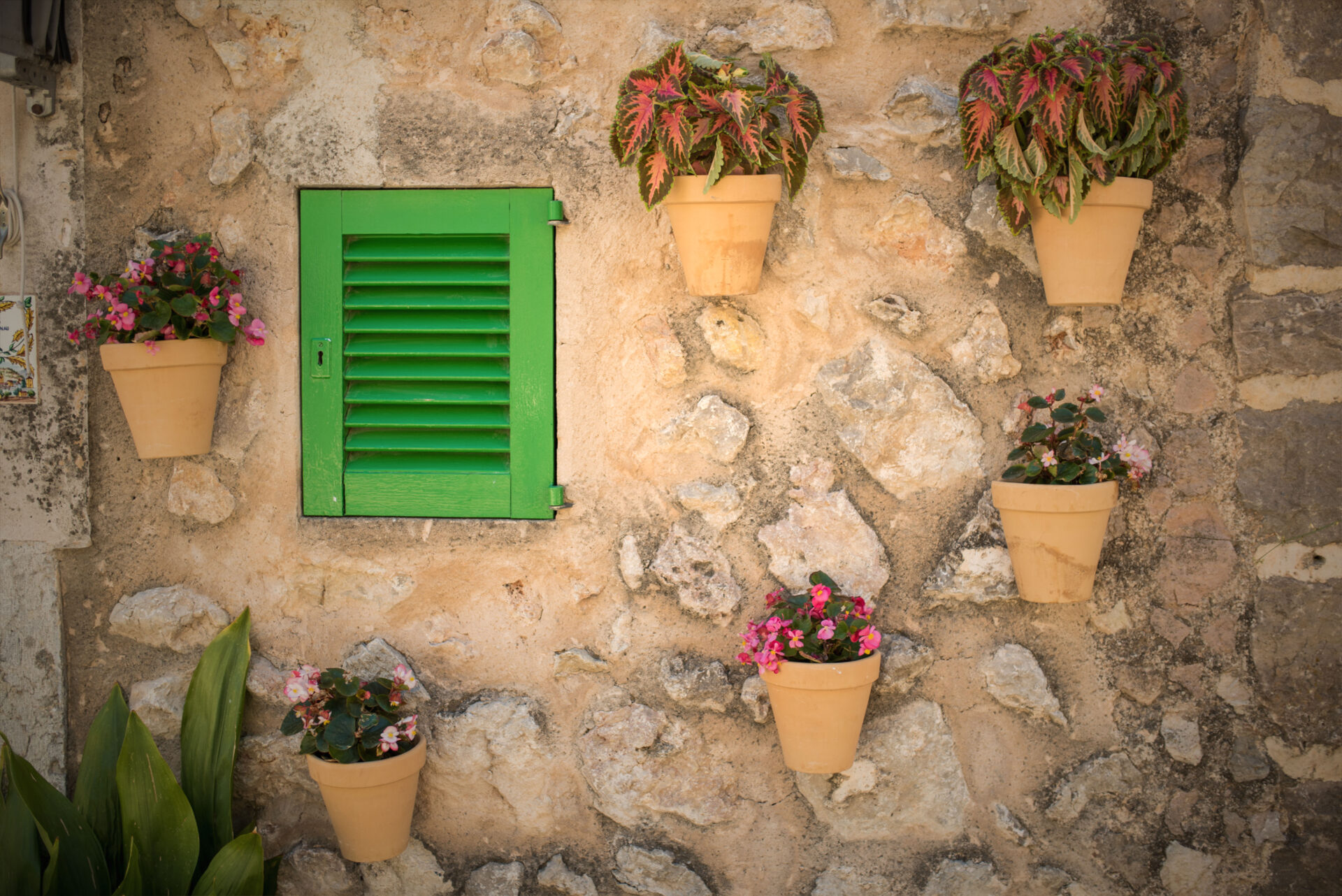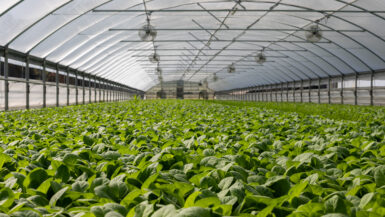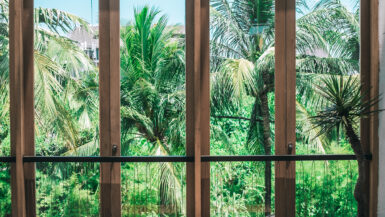Selecting the Correct Indoor Vertical Garden is very important; as urban living spaces shrink and the desire to reconnect with nature grows, indoor vertical gardening has become a popular solution for modern garden enthusiasts. This innovative approach offers an opportunity to grow plants in limited spaces while enhancing your home’s aesthetics. However, selecting the proper indoor vertical garden for your lifestyle can be a daunting task with numerous factors to consider.
This comprehensive guide will explore the core aspects of selecting the correct indoor vertical garden, including the types of systems available, the plants best suited for this method, and essential tips for maintaining a flourishing garden. Join us as we delve into the world of vertical gardens and help you choose the perfect fit for your unique lifestyle.
Incorporating Vertical Gardens into Home Design
As you embark on your indoor vertical gardening journey, it is essential to consider how your chosen garden system will integrate with your home design. A well-planned vertical garden can maximize your growing space and contribute to a harmonious and visually appealing environment. This subsection will discuss key factors that will help you seamlessly incorporate vertical gardens into your home while creating an inviting and inspiring living space.
Choosing the Right Location
Selecting the ideal location is the first step in incorporating a vertical garden into your home design. Consider the available space, natural light, and accessibility for maintenance. Choosing a spot near windows or balconies can provide the essential sunlight your plants need while installing grow lights in dimly lit areas can help compensate for the lack of sunlight. Remember that some vertical garden systems may require proximity to a power source or a water supply, so plan accordingly.
Matching Your Home Aesthetic
When choosing an indoor vertical garden system, consider how it will complement your home’s overall aesthetic. Whether your style is minimalist, contemporary, or rustic, a wide variety of innovative indoor vertical garden systems and technologies are available to suit your taste. Opt for materials and colors that will blend seamlessly with your existing décor, and don’t be afraid to get creative with your choice of containers, planters, and support structures.
Selecting Plants that Enhance Your Space
Choosing plants for your indoor vertical garden can significantly impact its visual appeal and integration with your home design. Consider the size, shape, and growth patterns of the plants you select and their compatibility with your chosen vertical garden system.
Opt for a mix of foliage, flowering plants, and edible varieties to create a visually dynamic and functional garden. Research the specific care requirements of each plant species, as different plants may require varying levels of light, water, and nutrients.
Functionality and Maintenance
When incorporating a vertical garden into your home design, consider the practical aspects of maintaining it. Select a garden system that is not only visually appealing but also easy to access for watering, pruning, and harvesting.
Choose plants known for their air-purifying qualities, such as spider plants or snake plants, to enhance the overall atmosphere and well-being in your living space. Additionally, invest in a proper drainage system to prevent water damage and maintain the health of your plants.
By carefully considering location, aesthetics, plant selection, and functionality, you can successfully incorporate a vertical garden into your home design, creating a beautiful and productive green oasis that enhances your living space and lifestyle.
Understanding Maintenance and Budget Requirements
When considering the right indoor vertical garden for your lifestyle, it’s crucial to understand the maintenance requirements and budget constraints of various garden systems. In this subsection, we’ll discuss the factors that can influence the upkeep of your garden and the costs associated with different types of vertical gardens. By evaluating these elements, you can decide which garden system best aligns with your lifestyle and financial considerations.
Assessing Maintenance Demands
The maintenance requirements of your indoor vertical garden can vary depending on several factors, such as the type of garden system, the plants you choose, and the growing conditions in your space. Some garden systems may require frequent watering, pruning, and nutrient supplementation, while others may be more self-sufficient with automatic watering and nutrient delivery systems.
Consider the time and effort you’re willing to invest in maintaining your garden and select a system that aligns with your preferences and schedule. Be sure to also account for the specific care needs of the plants you choose, as they can significantly impact the overall maintenance demands of your garden.
Calculating Initial and Ongoing Costs
The budget required for setting up and maintaining an indoor vertical garden can vary widely based on the garden system, materials, and plants you select. Initial costs can include purchasing or constructing the garden structure, buying plant containers and growing media, and investing in a lighting system if needed. Some high-tech vertical garden systems may have a higher price tag but can offer greater convenience and efficiency in the long run.
Ongoing costs can include water, electricity for lighting systems, and replacement of growing media or nutrients. If you opt for a more low-tech, DIY approach, your ongoing costs may be lower, but you may need to invest more time and effort in maintaining your garden. Take the time to research and compare the costs of various garden systems, materials, and plants to find a solution that fits your budget and lifestyle.
Considering Return on Investment
When evaluating the budget requirements of your indoor vertical garden, it’s essential to weigh the potential returns on your investment. For example, if you plan to grow edible plants, herbs, or produce, consider the savings you can achieve by reducing your grocery bill. Additionally, the health benefits and improved air quality associated with maintaining a thriving indoor garden can contribute to a better quality of life, making the investment worthwhile.
Moreover, an aesthetically pleasing vertical garden can increase the value of your home or rental property, adding a unique and attractive feature that can appeal to potential buyers or tenants. Consider these potential returns when determining the budget for your indoor vertical garden, and consider how they may offset your initial and ongoing costs.
By thoroughly analyzing the maintenance demands, budget requirements, and potential returns associated with various indoor vertical garden systems, you can make an informed choice that aligns with your lifestyle and financial situation. This will ensure you can enjoy the benefits of a flourishing indoor garden without compromising your budget or time commitments.
Selecting the Best Plants for Your Indoor Vertical Garden
Choosing the right plants is one of the most crucial aspects of creating an indoor vertical garden that thrives and complements your home. The type of plants you select will impact your garden’s overall aesthetic, maintenance requirements, and functionality. In this subsection, we will explore various factors to consider when selecting the best plants for your indoor garden and offer a few top recommendations for different gardening goals.
Finding the Right Plant for Your Space and Light Conditions
Before selecting plants for your indoor vertical garden, it is essential to assess the light conditions in your chosen space. Different plants have varying light requirements, with some thriving in bright, direct sunlight while others prefer low-light conditions. Observe the amount of natural light your space receives throughout the day and choose plants that will flourish under those conditions. If necessary, you can supplement natural light with artificial grow lights to accommodate your chosen plants’ needs.
Considering the Size and Growth Patterns of Plants
When selecting plants for your indoor vertical garden, consider each species’ size and growth patterns. Look for plants with compact growth habits or can be easily pruned to maintain a manageable size. In addition, consider how the plants’ growth patterns will affect the overall aesthetic of your garden. Opt for a mix of trailing, climbing, and upright plants to create visual interest and take full advantage of the vertical space.
Exploring Aesthetics and Color Variations
The visual appeal of your indoor vertical garden is greatly influenced by the colors, textures, and shapes of the plants you choose. When selecting plants, consider incorporating various foliage colors, ranging from vibrant greens to deep purples, to create a dynamic and visually engaging garden. Don’t be afraid to mix and match different leaf shapes, textures, and patterns to add depth and dimension to your vertical garden.
Adding Edible and Aromatic Plants to Your Garden
A well-rounded indoor vertical garden can offer more than just visual appeal – it can also provide a source of fresh, homegrown herbs, vegetables, and fruits. When selecting plants for your garden, consider incorporating edible and aromatic varieties to enhance your culinary experiences and fill your home with delightful scents. Some popular edible plant options for vertical gardens include herbs like basil, mint, and parsley and small fruiting plants like strawberries and cherry tomatoes.
Opting for Air-Purifying Plants for a Healthier Home
Another factor to consider when selecting plants for your indoor vertical garden is their ability to purify the air and contribute to a healthier living environment. Many common houseplants, such as spiders, snakes, and pothos, are known for their air-purifying properties, making them excellent choices for your vertical garden. Incorporating these plants into your garden can help remove toxins from the air and improve the overall air quality in your home.
By carefully considering the light requirements, growth patterns, aesthetics, edible qualities, and air-purifying properties of plants, you can create a diverse and thriving indoor vertical garden that enhances your lifestyle and living space. Remember to research the specific care needs of each plant species and ensure that they are compatible with your chosen garden system for the best possible results.
Assessing Your Space and Lighting Needs When Selecting the Correct Indoor Vertical Garden
One of the primary factors when selecting the ideal indoor vertical garden for your lifestyle is the space and lighting conditions available in your home. By assessing your space and understanding the lighting requirements of your chosen plants, you can create a thriving vertical garden that maximizes your growing potential and complements your home and lifestyle.
This subsection will discuss essential aspects to consider when evaluating your space and lighting needs, ensuring that your indoor vertical garden flourishes.
Measuring Your Available Space
Before diving into indoor vertical gardening, it is crucial to take accurate measurements of your available space. Consider the height, width, and depth of the area where you plan to install your vertical garden, and select a garden system that fits comfortably within those dimensions. Remember that some plants may require more space than others, so choose a combination of plants that will thrive within your available space without overcrowding.
Evaluating Natural Light Sources
Natural light is vital to the success of your indoor vertical garden. The lighting conditions in your chosen space will directly impact the types of plants you can grow and the overall health of your garden. Observe the intensity and duration of sunlight your space receives throughout the day, considering factors such as window orientation, nearby buildings or trees, and seasonal variations in sunlight. This information will help you select plants well-suited to your specific lighting conditions, increasing the likelihood of a thriving garden.
Considering Artificial Lighting Solutions
In cases where your available space lacks adequate natural light, artificial lighting solutions can help compensate for this deficiency. Grow lights, for instance, can provide the necessary spectrum of light needed for photosynthesis and plant growth.
When selecting a lighting solution, consider factors such as energy efficiency, heat output, and the compatibility of the light spectrum with your chosen plants. By investing in a suitable artificial lighting system, you can expand your plant selection and ensure the healthy growth of your indoor vertical garden.
Accounting for Airflow and Humidity
Another aspect to consider when assessing your space is your chosen location’s airflow and humidity levels. Adequate air circulation is essential for preventing diseases and pests, while humidity levels can impact the health and growth of your plants.
Consider placing your vertical garden near windows or doors that can be opened to promote airflow, or invest in a small fan to maintain proper circulation. Additionally, be mindful of the humidity requirements of your chosen plants and adjust your home’s humidity levels accordingly.
By carefully evaluating your available space, lighting conditions, and other environmental factors, you can create an indoor vertical garden that thrives and enhances your home and lifestyle. Remember to research the specific needs of your chosen plants and select a garden system that accommodates those requirements and integrates seamlessly with your space and design preferences.
Comparing Hydroponic and Soil-Based Systems
When selecting the ideal indoor vertical garden for your lifestyle, one of the key decisions you will face is choosing between hydroponic and soil-based systems. Both approaches have unique advantages and challenges, and understanding their differences will help you determine the best fit for your needs and preferences. In this subsection, we will explore the main characteristics of hydroponic and soil-based systems, discussing aspects such as setup and maintenance, plant selection, and environmental impact.
Setup and Maintenance: Balancing Simplicity and Control
One of the primary differences between hydroponic and soil-based systems is the setup and maintenance involved. Soil-based systems, which rely on traditional potting mixtures, tend to be simpler to set up and can often be more forgiving regarding watering and nutrient management. However, they may require more frequent maintenance, such as watering, fertilizing, and monitoring for pests and diseases.
Hydroponic systems, on the other hand, eliminate the need for soil, instead using nutrient-rich water solutions to deliver essential elements directly to the plants’ roots. These systems can offer greater control over nutrient levels and pH, resulting in faster growth and higher yields. However, hydroponic systems can be more complex and require additional equipment, such as pumps, reservoirs, and monitoring devices.
Plant Selection: Versatility and Compatibility
Another factor to consider when comparing hydroponic and soil-based systems is the range of suitable plants for each approach. While many plants can grow successfully in both systems, some may be better suited to one method. For instance, plants that require well-draining soil and are sensitive to overwatering may struggle in a hydroponic system. In contrast, plants that thrive in consistently moist environments may be ideal candidates for hydroponics.
When selecting plants for your indoor vertical garden, it’s essential to research each species’ specific needs and ensure that they are compatible with the chosen system. By selecting plants well-suited to hydroponic or soil-based systems, you can increase the likelihood of a thriving vertical garden.
Environmental Impact: Sustainability and Resource Efficiency
As you weigh the pros and cons of hydroponic and soil-based systems, it’s essential to consider the environmental impact of each approach. Hydroponic systems are often praised for their water efficiency, as they recirculate nutrient-rich water and can use up to 90% less water than traditional soil-based systems. Additionally, hydroponics can reduce the risk of soil-borne diseases and pests, potentially decreasing the need for harmful pesticides.
On the other hand, soil-based systems can offer a more natural growing environment and may be better suited for organic gardening practices. However, they may require more frequent watering and fertilization, which can contribute to higher water and nutrient consumption.
Ultimately, choosing between hydroponic and soil-based systems will depend on your preferences, budget, and gardening goals. By carefully considering each approach’s setup and maintenance requirements, plant selection, and environmental impact, you can make an informed decision that aligns with your lifestyle and contributes to a healthy, productive indoor vertical garden.







Leave a reply